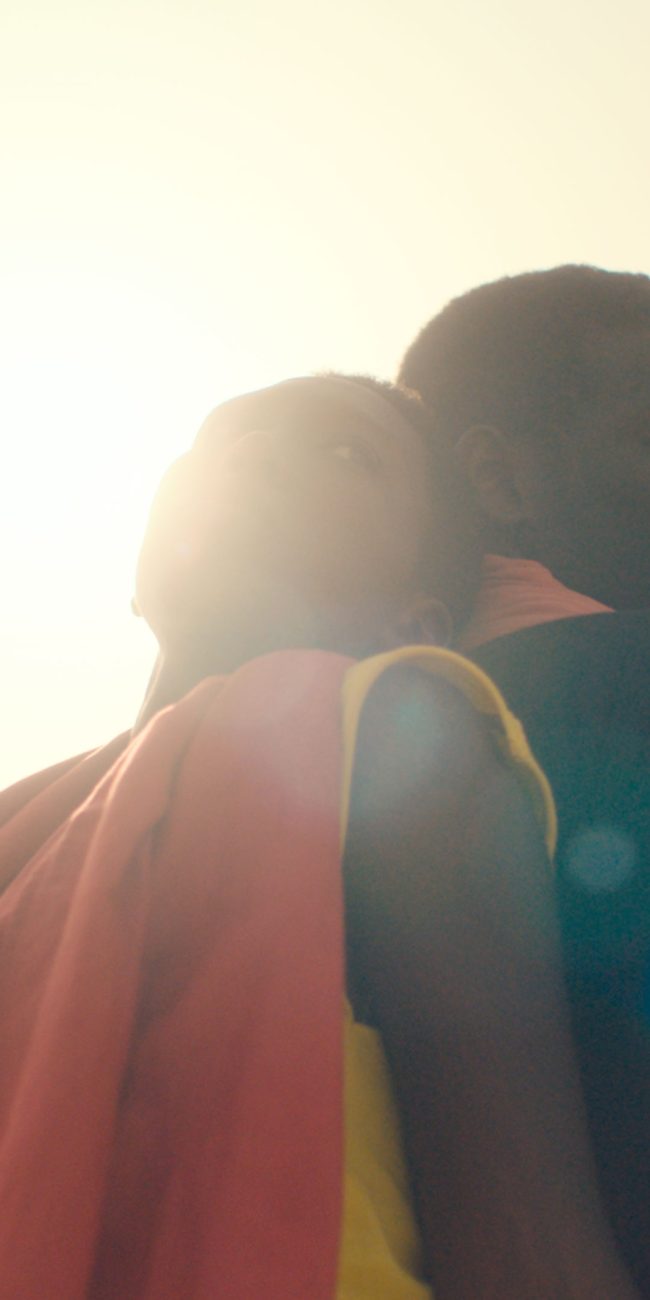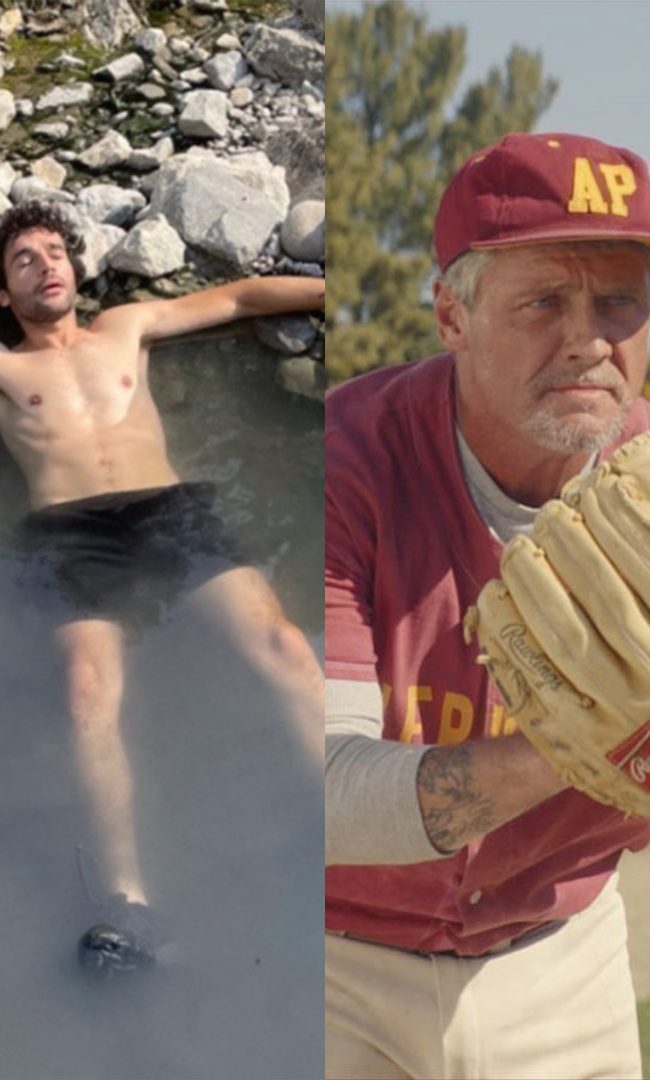A Conversation with Felix Van Groeningen & Charlotte Vandermeersch (THE EIGHT MOUNTAINS)
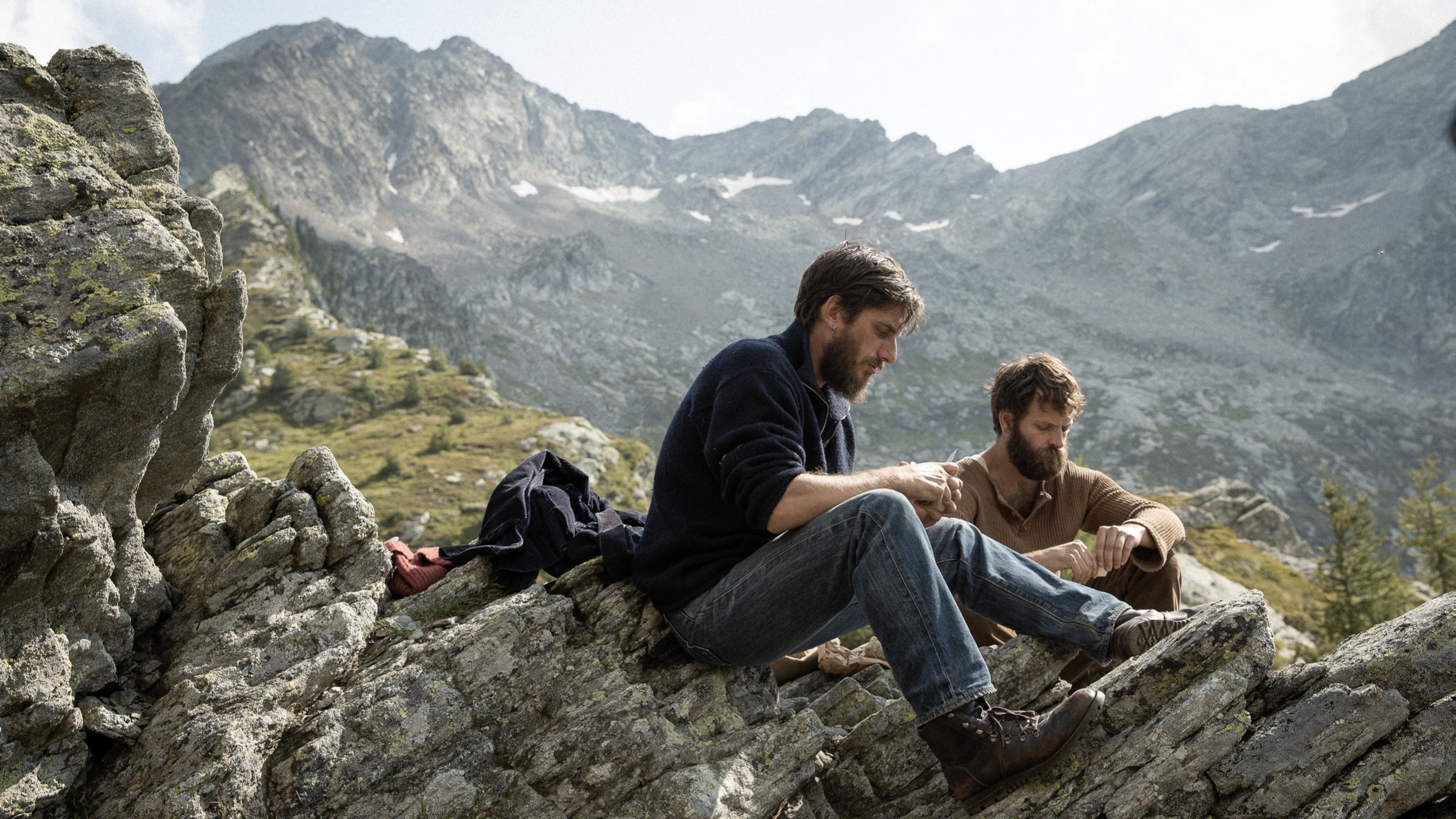
Felix Van Groeningen and Charlotte Vandermeersch are a writer director duo from Belgium who are also husband and wife. Vandermeersch has been acting for the screen since 2004 and helped Felix write the script for his 2012 film The Broken Circle Breakdown. She has amassed over 40 credits in the industry and wrote the screenplay for Cannes Jury prize winner The Eight Mountains. This production was a first for Vandermeersch as she decided to co direct it with her husband and veteran director Van Groenigan who, with The Eight Mountains, has now directed his 7th feature length film. The two of them collaborate to create one of the best dramas of the year. The following conversation was edited for length and clarity.
Hammer To Nail: Immediately when this film starts, one of the first things you notice is the 4:3 aspect ratio. Why did you guys choose this aspect ratio?
Felix Van Groeningen: We decided to go with this aspect ratio when we were preparing. Our first idea was to shoot wide. I go way back with our cinematographer Ruben [Impens], he has shot all of my features so we have worked together for over 20 years. We are always questioning things, but, for a while, we felt that we had to shoot in widescreen. At some point we got stuck in terms of how we wanted to approach things. There was something that we were not cracking and we could not figure it out. I had seen pictures of the locations we were going to shoot at in square format. All of a sudden it dawned on me that this worked incredibly well. It was something about the height of the image. This verticality works incredibly well for the mountains. It gave us a lot of freedom to do weirder things with the framing. Not just weird to be weird, in a way that made sense.
Charlotte Vandermeersch: We would often frame our characters on the side of the screen, as if they were just caught in the frame. It also allowed us to show the mountains towering above them. We liked the look of them being tiny human beings just living their lives.
FVG: To make sure we were happy with the decision, we did a test in the cinema. When we did that we realized that the aspect ratio gave the film a physical and more intimate quality. There is something less intimate about that widescreen format. At that point it was clear for us that we had to go for it.
HTN: There is amazing use of sky in the film. That was definitely something I loved about the film. You guys turned me into a Daniel Norgren fan with this film. These song choices work almost too well to the point where it seems like original music for the film. Why did you guys decide to add multiple Daniel Norgren songs to the mix?
CV: Well, we had one of his records called Alabursy. I got it from my brother. He did a road trip in Chile once and they were in nature all the time listening to this record on repeat. He knew that we would love it, so he gave it to us as a present. We really listened to it often at home, and when we started writing we were listening to it on repeat. I personally cannot write with music but Felix can. After a while, Felix realized that this was really matching what we were doing with this film.
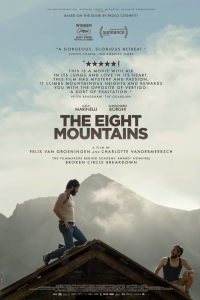
I thought it was a great idea and we decided to ask Daniel. At first he accepted because he loved the script and Felix’s previous work. After a bit, he backed out because he is a very stubborn man who keeps to himself. He wants to work the way he wants to. He is almost like a Swedish Bruno up in the woods. He backed out and we took a look at some alternatives but none of them were really clicking. So, we came back to him asking and this time we showed him some actual footage. This time he immediately said yes and that resulted in a beautiful collaboration where he sent us some unreleased work. He told us that, “this was the film he had been making music for without having one.”
HTN: Haha, That’s what it feels like
CV: Yeah, that is really what he said.
FVG: There was something really cool about scoring a movie with existing music. We had his whole repertoire but that was only like 50 songs. We narrowed it down to about 20 songs over time. As Charlotte said, he sent us the unreleased music, so yeah it was really a beautiful collaboration. It really only happened towards the end of the process.
CH: What was great about it was his voice. He can sing very high pitched and also very rooted, he is versatile. It is as if he combined the earth and the sky and also female and male. He has a male’s voice but he does not sing like a traditional “man.”
FVG: It is grounded but very vulnerable.
CV: Yeah, we needed this pureness somehow. It matched really well between Pietro and Bruno having this messenger through the music.
HTN: So, when you guys were writing the script, for some of these sequences, did you have multiple songs in mind and then in post finalize them? Or were those songs in the script originally?
FVG: No, because when we were writing we thought we would not be able to use his songs. Essentially the idea came in the edit.
CV: We did not really take any music into account during the writing process.
FVG: We never had any ideas about any particular song working for any particular scene but we had thoughts about what the soul of the music needed to be. Some songs fell very quickly into their place and were never removed. The song Like There Was a Door, we selected that for the sequence in which Pietro climbs to the top and yells for Bruno, that one never changed. Our editor, Nico, he is amazing, he put in the first cut and it just never moved. He made everything work so that it could always stay.
HTN: The combination of the soaring cinematography and his somber music literally brought tears to my eyes. The performances from Luca (Marinelli] and Alessandro [Borghi] are amazing. I was invigorated by their facial expressions and especially their beards. How did the casting process work for this film?
CV: We were introduced to them both…
FVG: Without beards…
CV: …yes without beards…when we went to Rome for the start of the casting process. They are kind of considered the best of their generation. The casting agents and producers recommended Luca and Alessandro for the opposite roles at first. When we first saw that it did not really click. We decided to offer Luca a part in the film but we were not set on which role he would be. We had all of Italy’s best actors send us tapes in search of the counterpart to Luca. It took around 6 months before Alessandro found out that the casting process was still going on. By that time we were set on Luca being Pietro and he asked if he could audition for Bruno. We were surprised because that was never the original idea. We said of course to him auditioning again and this time when we saw him he had a massive beard. Suddenly this great beard. He had it for another film. He is a very brave actor and they have a great connection. Luca and Alessandro are great friends. They did another movie together in 2015. They had been waiting to do another project together and Alessandro came in and blew us away. They made eachother so relaxed on set because they understand what the other one is doing, giving, taking. It was really quite something. We were so lucky to get two movie stars. Which is pretty ok haha.
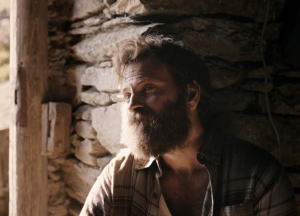
Alessandro Borghi in THE EIGHT MOUNTAINS
HTN: I am speaking with Alessandro Tomorrow, I thought he was amazing. When Alessandro and Luca have discussions during the film, it is so naturalistic that it can often feel like maybe it’s improvisational. Was the script followed very strictly or were there moments of improvisation?
FVG: Maybe one. The scene when they are cooking the fish on the grill. Of course the building of the house and things of that nature are looser, but, for almost all the dialogue we stuck to the script. I had a great screenwriter with me (signaling to Charlotte). Contrary to my other scripts and films there was a lot of refining to the script. We ran it over with Paolo Cognetti, who is the author of the book, and refined it further from there. He is very precise about what he thinks works and doesn’t work. Anything that you can lose he wants to cut it out.
CV: It was a very worked through script. It worked for the actors. We never demanded that they stick to it or anything but they enjoyed it.
FVG: There is this one scene when they are sitting by the fire. It is about a 4 paged scene, and usually as a director I would be obsessed with every little detail to really sculpt the scene. For this shoot we just did it over and over. It was amazing. Everyone was behind the monitor just crying.
HTN: The dialogue is amazing in the film. It really felt so natural. Often I can watch a film and have a general idea of how certain things were shot, there are many moments in your guys film where I genuinely have no idea how you guys shot it. If you could do an anatomy of a shot for around the 15 minute mark there is an incredible long shot of pietro and his father beginning their journey down a mountain. I also wanted to hear about 15 minutes remaining in the film after Pietro and Bruno’s final goodbye. There is an absolutely breathtaking and soaring long shot from above, how the hell did you guys pull that one off?
FVG: Those were both drone shots. We had used the drone a couple of times before. Normally you want to use them for very steady wide shots where you don’t feel it. You see it in a lot of commercials. It is a way to make something look grandiose. For that moment when they were making their way down the mountain we had the drone moving and I thought it came out great thanks to our amazing camera operators. The shot in the end is also a drone that is traveling upwards but it is almost an animated shot. There was basically no snow at that moment so we had to really work on that shot. The idea was there but the effects people really made it into what it became.
HTN: Those shots are amazing to me. Speaking of how it is shot, it is shot digitally. I really do think it is one of the best shot films I have seen. Why did you guys choose digital over film and if you could have used film would you have?
CV: It was an idea at one point. We thought about it.
FVG: There were constantly two cameras so it just would have been crazy.
CV: it is very difficult to shoot in mountainous areas. The light is so important in every moment. By the time you get there and everything is set up you really just want to start rolling. The clouds are coming and who knows, maybe in 5 minutes you cannot see anything anymore.
FVG: It also would have been a lot more expensive. I shot my first two films on film, in 16mm. I originally wanted the 35mm look for this film but we could not afford it. It is always a choice. We have gotten so used to how easy digital makes it. Going back is possible but it does require more concentration. On a more controllable set I would like to go back to film. There were so many variables with this shoot. In the beginning, film seemed like a great idea and even leading up to the shoot but by the end we realized how lucky we were that we decided to shoot on digital.
CV: It would have been crazy.
FVG: when you shoot on 35mm, there is something incredible about the way it looks. But it does force a kind of intense concentration on set and it limits the amount you can shoot. I am sure at some point I want to do that, but this was not the right film.
HTN: Well don’t sweat it because this is one of the most beautifully shot movies. It really looks so good.
FVG: Another issue was that if we went into the mountains and shot all of this stuff, we would only know in a week, once it finally developed, whether or not we had what we needed. Even that, it is just too scary. Especially because we shot chronologically. If we did not have it then, it could ruin the whole process.
HTN: I have now scene this film twice, once at Cannes at the Lumiere and now on my television at home, I loved it both times but, I was wondering if when you guys made the film, the theatrical experience was something you guys were thinking about and valued?
FVG: Absolutely. As I said we tested it on the big screen to make sure if 4:3 worked in the cinema specifically. Some televisions it may work, but we had this whole idea of sitting back and looking up at the tall image on the big screen as if it was a mountain.
HTN: It was an honor to speak with you guys, I really loved the film so much.
FVG: Thank you!
CV: Thank you!
– Jack Schenker (@YUNGOCUPOTIS)
Felix Van Groeningen, Charlotte Vandermeerschinterview; The Eight Mountains movie review








